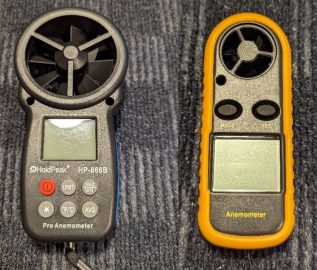Optimizing air flow can make your home more comfortable

Inconsistent airflow is a common problem in homes, and not just in homes with a second story. Almost any type of home can run into issues where some rooms may be hotter/colder than others, sometimes significantly. But it’s easier than you might think to resolve this by making adjustments to optimize the airflow in your home.

Many factors play into a room’s temperature, including: cardinal direction (e.g., south facing versus north facing), the amount of insulation in exterior walls, proximity to the kitchen or other heat-generating areas of the home, on which floor a room is located.
There are a few ways you can either even out the temperature in the different rooms of your home or make the rooms you use most often more comfortable.
Air moves throughout your home through ductwork that is attached to a central furnace and air-conditioning system. There are main lines of metal or flex-ducts that have smaller “trunks” coming off of them to distribute air to other parts of the home. The three main ways to do this are:
- Opening/closing registers
- Adjusting dampers in your duct work
- Zoning your duct system
These measures work both for heating and cooling your home, and making adjustments can also help you conserve energy and save money.
Opening/closing registers
This is the simplest way to adjust the temperature from one room to the next, especially if your home doesn’t have dampers. Depending on the design of your home – ranch style, split level, etc. – some rooms of the home may be a lot colder/warmer than other rooms. As mentioned above, this can happen for a variety of reasons, some of which can be remedied.
If you have one room that is really cold this summer, but another that is really warm, you can close the register (to varying levels) to the room that is really cold to help move more of the air-conditioned air to the warmer room.
Closing just one register may not be enough to adjust the amount of air shifting to another room. You will want to remember that closing one register will shift air to all of the other registers coming off of that particular “trunk” in the ductwork, but with a little trial and error you should be able to help make one more a bit more comfortable than it was.
Dampers in your ductwork
Dampers are similar to opening/closing a register, but are situated much closer to the source of the air: the blower for your furnace or air-conditioner.

Not all homes have dampers. You’ll know you have them if you see little levers placed within the duct work, usually a few feet or so from the furnace (see photo at right).
Opening or closing these dampers changes the flow of air earlier on in the process which makes it much more effective at pushing air into one room or rooms than closing the registers. Dampers are usually found right where the trunk comes off the main duct itself.
Note: Write on the duct itself with a permanent marker to indicate which position is open (air flows) and which is closed (air stops); noting which position works best for summer or winter, depending on the room and home setup, might also be helpful.
To learn more about dampers and how help balance the airflow in your home, check out our airflow video.
Zoning
Zoning your HVAC system is the most expensive measure. Using zoning is an effective way to control where air flows and how much air flows. Separate, programmable thermostats control this. Zoning your duct system works by using dampers, which you can program to open and close. These control where air flows depending on the temperature of the room the zoned damper system controls.
A licensed HVAC contactor can help you determine if zoning would be a good solution for your home or if installing manual dampers will be just as effective (if not cheaper).
How do you measure airflow in your home?
These three methods work well to control the flow of air and help make your home or just one particular room much more comfortable.

However, outside of just using your hand to feel the speed of the air coming out of the register, how can you accurately measure whether your efforts have succeeded?
Anemometers measure airflow as well as the temperature of the air. You can find these at most home improvement stores or online.
Anemometers vary in complexity from fairly intricate to simple. The one on the left in the photo at right ranges from about $25-35 and will do an excellent job for home applications. The one on the right will also do a great job and is a cheaper option ($15-20), though it has with fewer options/features.
Ranch style homes, as you might imagine, are some of the easiest to handle when it comes to balancing your airflow. Two-story and split-level homes can be fairly difficult if not a bit laborious to tackle, but making adjustments in those can still help balance the airflow in your home.
Add that on top of any energy-efficient measures you’re already using and you’ll help reduce your energy usage and utility bill – not to mention just being more comfortable.

Eric BenSalah is an Energy Advisor for OPPD. After spending time in the field doing HVAC work, he joined OPPD’s Contact Center in 2012, assisting customers with energy efficiency and heating and cooling-related inquiries. Over the last three years, Eric revamped the Energy Efficiency webpages at oppd.com and launched the new Energy Education Program. In his free time, Eric continues to play drums (for 30 years now) and is an avid reader of philosophy, astronomy, history and all things strange.
View all posts by Eric BenSalah >







